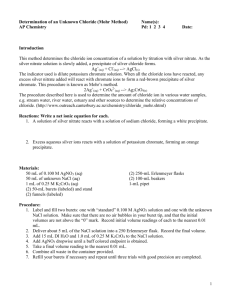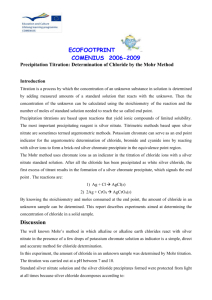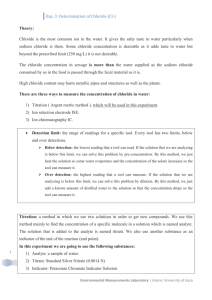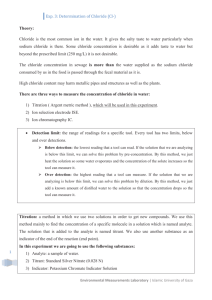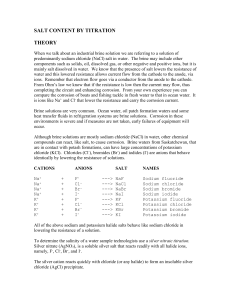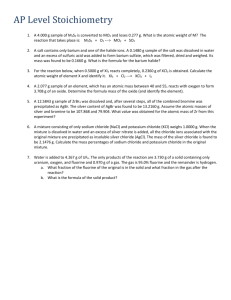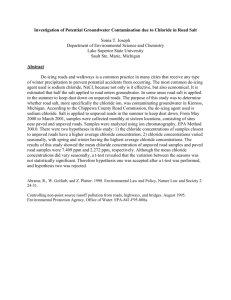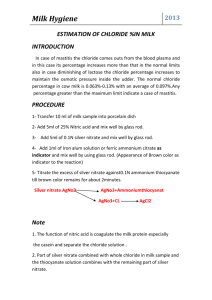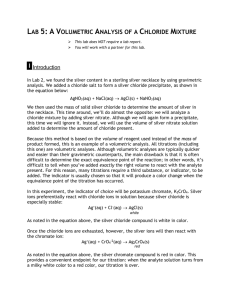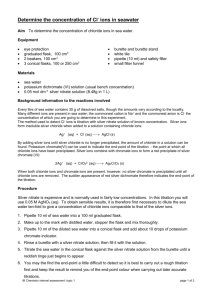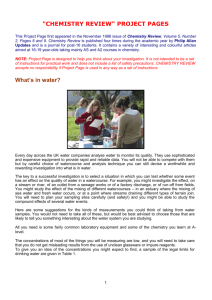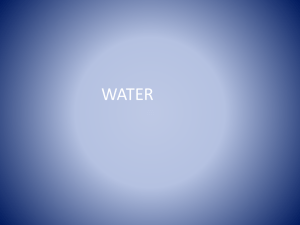Chloride
advertisement
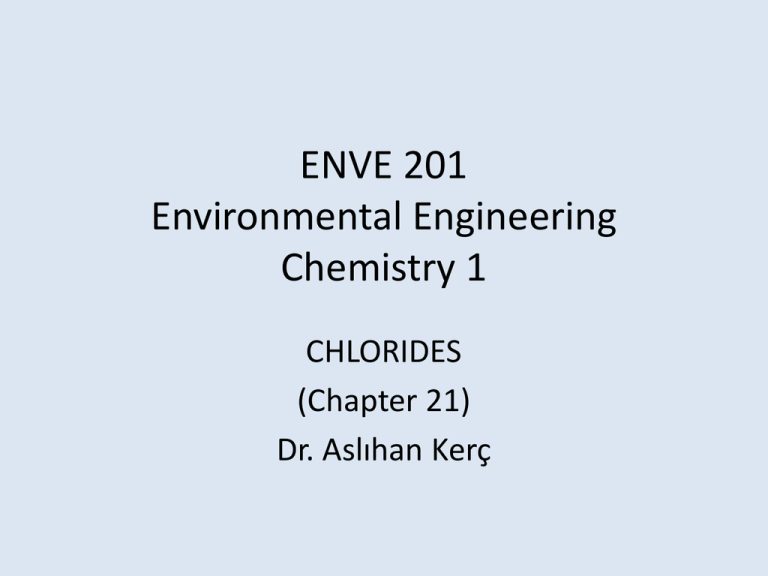
ENVE 201 Environmental Engineering Chemistry 1 CHLORIDES (Chapter 21) Dr. Aslıhan Kerç Chlorides As mineral content ↗ Cl- ↗ • Upland, Mountain supplies low in Cl• High in rivers and groundwater • Sea-Ocean ↗ Sources of Chloride • Surface waters dissolve chlorides from top soil. • Spray from the ocean is carried in land as droplets. • Ocean and sea waters invade the rivers that drain into them. • Intermixing between freshwater and saltwater layers Sources of Chloride There is a hydrostatic balance between seawater and groundwater in areas adjacent to the ocean. Over pumping of groundwater disturbs the balance. Salt water intrusion into well Hydrostatic Balance Salt water intrusion Hydrostatic Balance Salt water intrusion Effect of Evapotranspiration Evapotranspiration of water used for irrigation • Lost to the atmosphere • Leaving the salt in the soil • Destruction of soil’s crop-growing potential Highly saline irrigation water return to the surface waters Normal evaporation also increases salt content of surface water. Chloride in Wastewaters • Human urine contain chloride originating from consumed food and water 6 gr Cl- / person / day • Cl- in municipal wastewater 15 mg/L discharge to the surface water • Industrial wastes also contain Cl- Chloride in Drinking Water • Concentration above 250 mg/L give a salty taste • For public use limit 250 mg/L • In arid regions 2000 mg/L can also be used , human system become adapted. Before development of bacteriologic test, Cl- and nitrogen determination used for detecting contamination of groundwater by wastewater Cl- measurement and total salinity important for irrigation water Chlorides can be used as tracers in Env. Eng. in groundwater studies. Methods of Determination • Mohr method (Argentometric) Employing silver nitrate as the titrant Potassium chromate as the indicator • Mercuric nitrate method Mercuric nitrate titrant Diphenylcarbazone indicator Instrumental Methods • Potentiometric titration change in the potential between a reference electrode and silver-silver chloride electrode Titration w/silver nitrate solution Chloride present complexes with silver ions When all chloride complexes silver ion concentration increases Sudden increase in voltage Instrumental Methods • Automated ferricyanide methodColorimetric • Ion chromatography Mohr Method 0.0141 N silver nitrate ( N / 71 ) Each ml = 0.5 mg ClCl- is precipated as silver chloride Ag+ + Cl- AgCl (white precipitate) End point presence of excess Ag+ 2 Ag+ + CrO-24 Ag2CrO4 (reddish-brown ppt) Mohr Method 1. Sample size 100 ml 2. pH 7-8 Ag+ ppt as AgOH at high pH levels and CrO-24 is converted to CrO-27 at low pH. 3. A definite amount of indicator Cl- (mg/L) = ( ml AgNO3 – blank)*0.5 *1000 ml sample 0.0141 * 35.45 =0.5 Mercuric Nitrate Method Reading assignment
